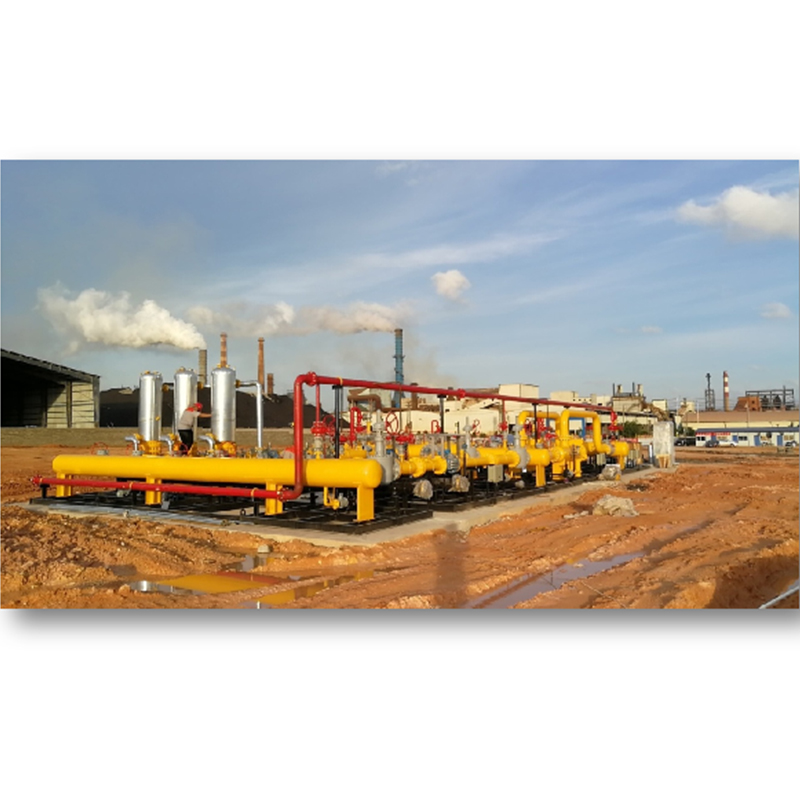
Aug . 20, 2024 03:07
Back to list
Natural Gas Pressure Reduction Station Overview and Key Features
Understanding Natural Gas Pressure Reduction Stations
Natural gas is a vital energy source used globally for heating, electricity generation, and as a fuel for vehicles. However, the transportation and distribution of natural gas present unique challenges, one of which is the management of pressure levels. This is where natural gas pressure reduction stations play a critical role.
A natural gas pressure reduction station (PRR) is a facility designed to reduce the high-pressure natural gas coming from pipelines before it reaches consumers and end-users. These stations are strategically located along the natural gas supply chain, particularly near distribution networks where lower pressure levels are necessary for safe and efficient delivery.
The Importance of Pressure Reduction
Natural gas is transported over long distances at high pressures to ensure efficient movement through pipelines. High-pressure transport minimizes gas volume and prevents significant energy losses due to friction. However, when this high-pressure gas reaches urban areas or residential neighborhoods, it must be reduced to a safe and usable pressure level. This is where pressure reduction stations become essential.
Utilizing a PRR enhances safety by preventing gas-related accidents that could arise from excessive pressure. For instance, appliances in homes, such as stoves, heaters, and water heaters, operate optimally at lower pressures. A PRR ensures that the gas is delivered to these appliances at the correct pressure, preventing equipment damage and potential hazards.
Components of a Pressure Reduction Station
.
1. Filters To remove impurities and particles from the gas, ensuring that the gas reaching consumers is clean and safe.
محطة تخفيض ضغط الغاز الطبيعي

2. Regulators To maintain consistent and stable pressure levels throughout the distribution network.
3. Monitoring Systems Equipped with sensors and controls to monitor the pressure, flow rate, and other critical parameters. This allows operators to ensure that the station is functioning correctly and safely.
4. Safety Devices Includes emergency shut-off valves and pressure relief valves to prevent overpressure situations that could lead to explosions or other dangerous scenarios.
Operational Procedures
The operation of a natural gas pressure reduction station involves regular monitoring and maintenance to ensure its efficiency and safety. Trained personnel are tasked with assessing the performance of the station and making necessary adjustments to the pressure settings based on demand and flow changes in the pipeline.
During high demand periods, for example, operators may need to adjust the pressure levels to ensure sufficient gas supply to all areas served by the station. Conversely, during low demand, the system must be adjusted to prevent excessive pressure buildup.
Conclusion
Natural gas pressure reduction stations are indispensable in the safe and effective delivery of natural gas to consumers. By managing pressure levels, these facilities play a crucial role in ensuring safety, reliability, and efficiency in the natural gas distribution system. With the growing demand for natural gas as an energy source, the importance of well-functioning pressure reduction stations will only increase, highlighting the need for continued investment in infrastructure and technology to support this essential aspect of energy management. As we look toward the future, ensuring the integrity and reliability of these systems will be paramount in maintaining a stable energy supply for communities around the world.
Latest news
-
Safety Valve Spring-Loaded Design Overpressure ProtectionNewsJul.25,2025
-
Precision Voltage Regulator AC5 Accuracy Grade PerformanceNewsJul.25,2025
-
Natural Gas Pressure Regulating Skid Industrial Pipeline ApplicationsNewsJul.25,2025
-
Natural Gas Filter Stainless Steel Mesh Element DesignNewsJul.25,2025
-
Gas Pressure Regulator Valve Direct-Acting Spring-Loaded DesignNewsJul.25,2025
-
Decompression Equipment Multi-Stage Heat Exchange System DesignNewsJul.25,2025

